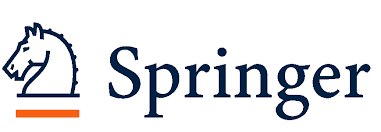We are very happy to inform you that the next LIDC Congress will be held in Gothenburg on September 21-24
The questions that will be discussed are the followings :
Question A
Do recent developments in enforcement, case-law, and guidance from competition authorities and regulators make the delineation between legitimate and efficient purchasing and supply arrangements and infringing conduct sufficiently clear in practice that businesses and their advisors know how to stay on the right side of the law?
Jean-Louis Fourgoux will be the International Rapporteur.
Background/Context:
We are seeing consumer prices rising at pace globally, central banks have increased rates, and events such as the Covid pandemic, the war in Ukraine, and Brexit continue to stress supply chains.
Against this backdrop, it is important that companies are able to distinguish clearly between legitimate and efficient conduct and infringements of the applicable rules and to assess the impact on their commercial relationships.
In addition to focusing on sellers and the conditions on which they sell their products or services to buyers, buyers’ conduct in their interactions with suppliers and markets when purchasing goods and services has recently come under increased scrutiny from competition law, enforcement and guidance (e.g. the Horizontal Guidelines).
From co-ordinated conduct by buyers, such as joint purchasing/buying alliances (e.g. rules for purchasing alliances in the food retail sector in France), buyers’ cartels and purchase price fixing (e.g. the Ethylene and Car Battery Recycling cases), to unilateral conduct by buyers that hold substantial purchasing power. As regards the latter, new rules and cases (e.g. in Belgium) have considered the “abuse of economic dependence”, which targets situations where a company abuses the relative economic dependence of another company (supplier or customer).
Different jurisdictions have taken a range of approaches, which have evolved and changed over time. What is the current situation in these jurisdictions and what are the LIDC National Chapters’ and members’ respective experiences – is the line between legitimate and infringing conduct sufficiently clear or is further guidance from authorities and courts required?
Question B
What mechanisms exist to avoid over-broad trademarks and address concerns that the trademark registers are clogged (e.g. bad faith in Sky v SkyKick; requirements forevidence of use), and are these mechanisms effective?
Ingrida Karina-Berzina will be the International Rapporteur.
Background/Context:
Trademark owners understandably want to protect as widely as possible around their brand. However, this can lead to cluttered trademark registers which increase the cost (deadweight loss) of launching a new brand, and may restrict dynamic competition particularly from smaller players.
Different jurisdictions have taken a range of approaches, which have evolved and changed over time: from requirements of use (and/or evidence of use) to potential revocation for non-use; from requirements of filing by class and limiting scope within class to requirements that filings are not made in bad faith. For example, bad faith has been an issue in recent cases (from Hasbro through Sky v SkyKick which still pending in the English courts).
What are the LIDC National Chapters’ and members’ respective experiences in the effectiveness of these mechanisms, or other rules and practices, in seeking to allow the ‘right’ scope of protection?





































